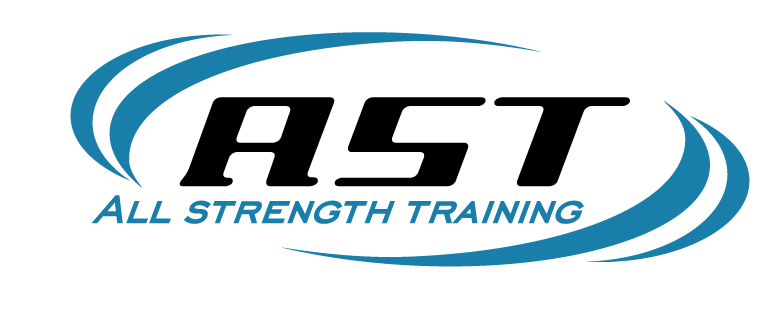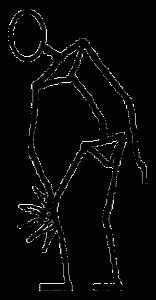Stop Knee Pain Before It Starts
At some time or another, almost every serious athlete is going to experience periods of knee pain. Whether it’s a runner who is feeling the effects of running on concrete, the football player who’s made one too many quick direction changes, or just your average gym rat whose knees are starting to bark at them from too much squatting, odds are pretty good it’ll happen at some point. That is, unless you take a few steps to prevent it.
Prehabilitation vs. Rehabilitation
Many people are familiar with the idea of rehabilitating an injury – fixing something that’s already broken (injured). But very few people know much about prehabilitation – stopping an injury from ever developing in the first place. Granted, it can be pretty boring and can feel like a waste of time when you’re already healthy, but trust me, it’s better than having to see all of your progress come to a screeching halt because you got sidelined for 3 months with a strained ligament, or even worse a muscle or ligament tear. At that point you’d be kicking yourself for not taking a few extra minutes for prehab – except you can’t bend your knee enough to do it.
It’s important to note that prehab movements to prevent an injury to one area are not always the same movements that you would use to rehab an existing injury. So I just want to point out that this article is not intended to replace physical therapy or any other rehab protocols, it’s merely a breakdown of an easy 5-minute workout to keep already healthy knees just as healthy.
The Movements
- Self-Myofascial Release (SMR) – Iliotibial (IT) Band
- SMR – Adductors
- SMR – Calves
- Terminal Knee Extensions (TKE’s)
Self-Myofascial Release (SMR)
SMR is to your muscles what a rolling pin is to a lump of bread dough. You basically take a hard object (usually a foam roller, which come in various densities) and roll up and down the muscle, stopping to apply pressure to the tight spots for 15-20 seconds before moving on to the next tight area. The pressure from the roller stimulates the Golgi Tendon Organ (GTO) reflex, which triggers the muscle to relax and release tension. It can take several weeks up to several months to fully release the pressure on an area, depending on how severe the problem is.
SMR – IT Band
The IT band is a length of connective tissue that originates at the hip and runs down the side of the thigh, inserting into the lower leg just below the kneecap. When tightened, the IT band can pull both the pelvis and the knee joint out of alignment, leading to pain in the front (anterior) side of the knee, an ailment commonly diagnosed as “runner’s knee syndrome”, as the repetitive impact of running or jumping (volleyball, basketball) tends to contribute highly to the buildup of tension.
To roll the IT band, lie on one side with the roller just below the hip bone, with the bottom leg straight out and the top leg on the floor in front. Use the front foot to push so that the roller moves down the thigh, stopping just below the knee joint. Be careful not to roll directly on the hip or knee joints, instead staying only on the muscles of the side of the thigh. Remember to apply continuous pressure to affected spots for 15-20 seconds before moving on.
If you need to apply more pressure to get at tight spots, try stacking the front foot on top of the bottom so that both legs are straight out, and use the top leg to push down to add more pressure. Note: this is not for beginners and can be extremely painful, so try to get as much release as you can from the first variation as you can before trying this adjustment.
You can also try slightly turning the shoulders and hips as you roll to get more surface area, so that you’re rolling the side, slightly off to the front toward the quads, and slightly off to the back toward the hamstrings.
SMR – Adductors
The adductors are basically the antagonistic muscles to the IT band – they still pull on the knee and the hip, just in different directions. They tend to get tight with increased quad training, as well as movement patterns that involve a wider stance.
To roll the adductors, lie face down on the floor with the roller parallel to your torso. You’ll want to keep the shoulders and hips squared to the floor as you move, and you want the knee to be straight out from the hip with the lower leg bent at about 90 degrees. Start with the roller positioned higher on the thigh up near the groin muscles, and roll down toward the top of the knee. The adductors extend down the leg a little lower than the IT band does so you can go down just a bit farther. Make sure that your knee stays in line with the hip, it’s easy for it to start dropping low as you roll. Find those tight spots and hit them each for 15-20 seconds before moving on.
SMR – Calves
If the calves are tight, then the weight will tend to shift to the ball of the foot when squatting or deadlifting, causing a lot of shearing stress on the patella tendon. A big red flag is when the heels pop up off of the ground during squats, deadlifts or lunging movements. The pressure should always stay on the heel or mid-foot, never the ball of the foot (with the lunge, I’m referencing the back foot; with the rear foot it’s impossible to keep the heel down and you shouldn’t try).
To get the calves, I recommend focusing on rolling the top of the calf (the gastrocnemius) and the bottom (the soleus) seperately, if only because of how difficult it is to keep your body held up by your arms if you try and roll everything at once. You’ll sit on the ground with both legs straight out and the roller positioned just underneath the knee at the very top of the calf. Start with both feet side by side on the roller and the toes pointing up toward the ceiling. Lift the hips up so that all of the pressure is now applied into the foam roller, and pull the hips back under your shoulders so that the roller moves down toward the middle of the lower leg, and then roll back up. Again, you’ll want to focus on the tight spots for 15-20 seconds before moving on. After you’ve done all of your rolling for the upper calf, readjust so that the roller starts at the mid-calf and roll down to just above the Achilles tendon and back, being careful not to apply pressure to the tendon itself.
As pictured, you can increase the pressure by crossing one leg over another and using the top leg to press down into the roller. You can also try doing some rolls with the toes up, some with the toes pointing off to the left, and some with them pointed off to the right to get all of the calf surface.
Terminal Knee Extensions (TKE’s)
TKE’s are a great strengthening movement for the Vastus Medialis Oblique (VMO), which is responsible for stabalizing the patella (kneecap). The muscle recruitment is similar to a conventional leg extension movement, with one big difference – a leg extension machine braces the thigh in place, eliminating movement at the hip, which in turn, combined with the downward pull of the weight, results in a huge amount of compressive force on the knee. The TKE allows the knee and hip to move freely together and eliminates the compression because the weight pulls front to back.
I use JumpStretch bands, and use either a light (purple) band or an average (green) band. Other bands work just fine, just figure out a comparable tension. Choke the band to a power rack or something stable at about knee height.
Make sure to keep the heel of the working foot on the ground so that you’re not using momentum to get through your reps, and make sure that you’re not moving your hips and butt forward and backward for the same reason. I like to pause for 1-2 seconds at the top of each rep to keep things extra strict. Just remember nobody cares how thick of a band you use for TKE’s.
The Workout
- SMR – IT Band – 2-3 slow rolls, focusing on each tight spot, followed by 10 brisk rolls up and down the leg
- SMR – Adductors – 2-3 slow rolls, focusing on each tight spot, followed by 10 brisk rolls up and down the leg
- SMR – Calves – 2-3 slow rolls, focusing on each tight spot, followed by 10 brisk rolls up and down the leg
- TKE’s – 3 sets of 10-20 reps per leg
Do this at least before every lower body training session, but it can be done 4-5 times a week if necessary. Just be consistent, and it’ll go a long way toward keeping your knees healthy and happy, and your performance will thank you.





This is a very well said article. I learned so much about prehabilition. Doing these practice can really makes my knees healthy and won’t give me a problem when it comes to increasing my performance. Thank you very much.